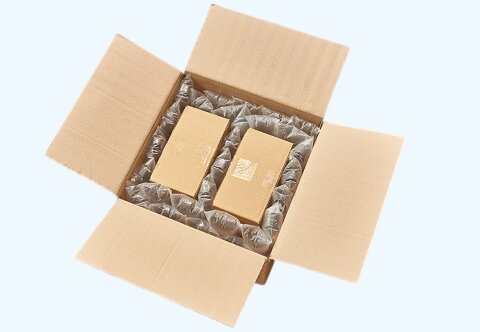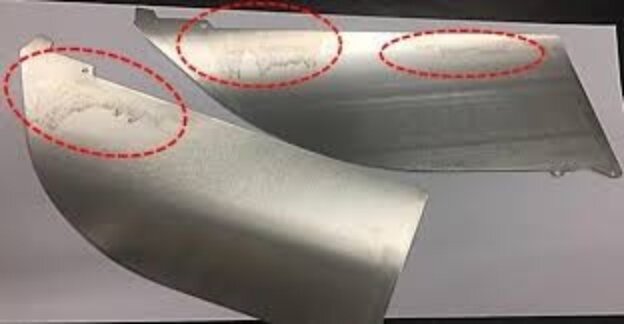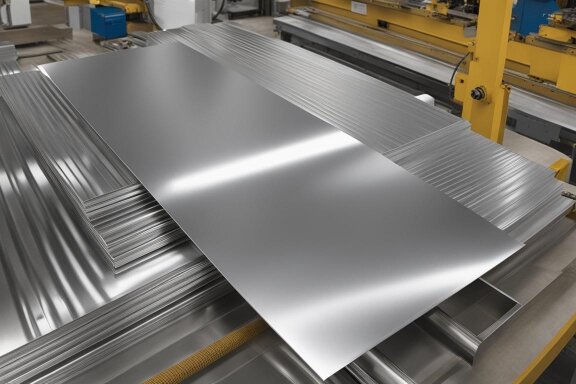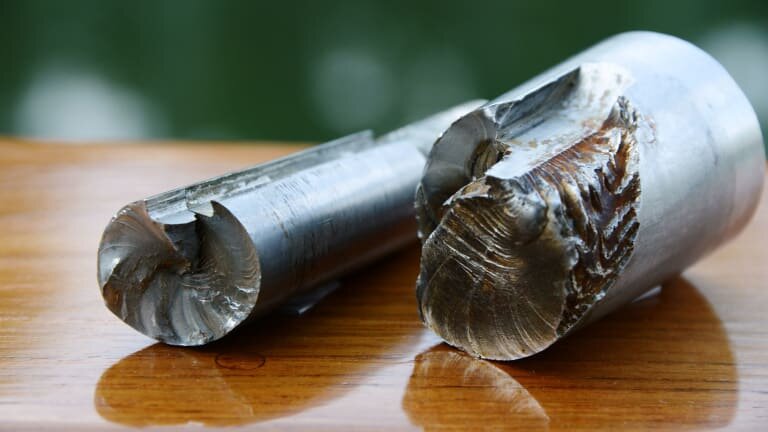Stainless steel stick welding can seem daunting at first. Many need help with the complexity and precision required for a successful weld. Fortunately, with the proper techniques and tools, anyone can master this process. In this post, I will share practical tips and step-by-step guidance to help you achieve solid and clean welds.
Stick welding stainless steel involves a few critical steps. First, you need to select the correct electrode. A 308 or 316 stainless steel rod usually works best. Next, ensure your work area is clean and free of contaminants. Finally, maintain a steady hand and control your heat input to prevent warping and ensure a strong weld.
Curious about the details? Let’s dive into the specifics to help you get it right every time.
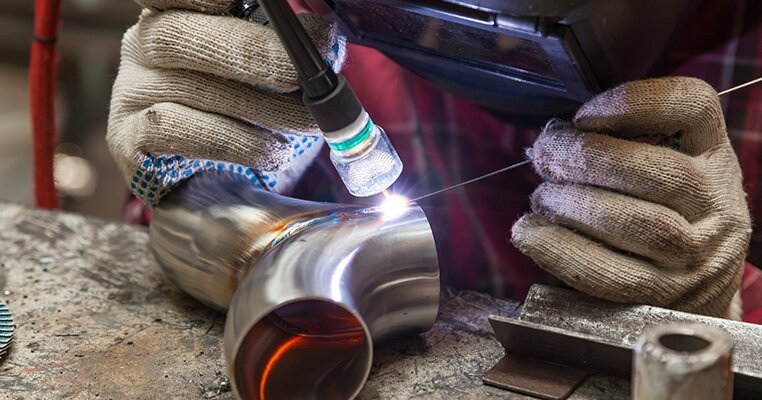
Basics of Stick Welding Stainless Steel
What is Stick Welding?
Stick welding, also known as Shielded Metal Arc Welding (SMAW), is a manual arc welding process that uses a consumable electrode coated in flux to lay the weld. An electric current passes through the electrode, creating an arc between it and the workpiece, which melts the metal and the electrode to form a weld.
Equipment and Materials Needed
To perform stick welding, you will need the following equipment and materials:
- Welding Machine: A power source that provides the necessary current for welding. It can be either AC or DC, with DC being preferred for most stainless steel welding.
- Electrodes: Consumable rods coated in flux, such as E308L or E309L for stainless steel. The choice of electrode depends on the material being welded.
- Electrode Holder: A clamp that holds the electrode and conducts the welding current.
- Ground Clamp: A clamp connected to the workpiece to complete the electrical circuit.
- Welding Cables: Heavy-duty cables that connect the welding machine to the electrode holder and ground clamp.
- Protective Gear: This includes a welding helmet with an appropriate shade, welding gloves, a fire-resistant apron or jacket, and safety glasses.
- Chipping Hammer and Wire Brush: Tools used to remove slag and clean the weld bead after welding.
How to Stick Weld Stainless Steel: Step-by-Step Guide
1、Prepare the Workpiece
First, ensure the stainless steel surface is clean and free from contaminants. Use a wire brush or grinder to remove dirt, grease, or rust. A clean surface ensures a strong bond and reduces the risk of contamination.
2、Choose the Right Electrode
Select an electrode specifically designed for stainless steel. For general purposes, electrodes such as E308L or E309L are commonly used. These provide good corrosion resistance and strong welds, making them ideal for stainless steel applications.
3、Set Up the Welding Machine
Adjust your welding machine settings based on the electrode and thickness of the stainless steel. Typically, a DC power source with reverse polarity (DC+) is preferred. Set the current according to the electrode manufacturer’s recommendations, ensuring you have sufficient power for a stable arc.
4、Strike the Arc
Hold the electrode at a 10-15 degree angle from vertical. Strike the arc by gently tapping the electrode on the workpiece and lifting it slightly to create a consistent arc.
5、Control the Weld Pool
Move the electrode steadily along the joint, maintaining a consistent arc length. Watch the weld pool closely and adjust your speed to ensure a uniform bead.
6、Finish the Weld
Once the weld is complete, let it cool naturally. Avoid quenching with water, as rapid cooling can cause cracking. After cooling, use a chipping hammer and wire brush to remove slag and clean the weld area. Inspect the weld for any defects and ensure it meets the required standards.

Welding Procedures
Tack Welding Techniques
Tack welding temporarily holds pieces of metal together before performing the final welds. Place small welds at intervals along the joint to align and secure the workpieces. Ensure the tack welds are strong enough to hold the pieces in place but not so large that they interfere with the final weld.
Running Beads and Stringer Passes
Running beads and stringer passes are foundational techniques in stick welding. A running bead is a continuous weld made along a joint, while a stringer pass refers to a single, straight pass along the weld joint. To perform these techniques:
- Hold the electrode at the correct angle, typically 10-15 degrees from vertical.
- Maintain a consistent arc length.
- Move the electrode steadily along the joint, ensuring an even distribution of weld metal.
- Keep a steady travel speed to avoid defects such as undercutting or excessive spatter.
Weaving Techniques for Wider Welds
When welding wider joints, weaving techniques can be used to cover more area with each pass. Common weaving patterns include the zigzag, circular, and triangular patterns. To perform weaving techniques:
- Hold the electrode at the appropriate angle.
- Move the electrode in the desired pattern, ensuring each weave covers part of the previous pass.
- Maintain a consistent travel speed and arc length.
- Control the heat input to avoid overheating and ensure proper fusion.
Managing Distortion and Warping
Distortion and warping are common challenges in welding due to the heat input and cooling process. To manage these issues:
- Tack welds hold the workpieces in place and prevent movement during welding.
- Employ a backstep or skip welding technique, where you weld short sections at intervals and then go back to fill in the gaps.
- Balance the heat input by welding on both sides of the joint alternately.
- Use clamps and fixtures to hold the workpieces in position.
- Allow the workpiece to cool gradually to minimize thermal stress.
Post-Welding Considerations
Cleaning and Finishing the Weld
After completing the welding process, cleaning and finishing the weld is essential to ensure it meets the desired quality and appearance standards.
Steps:
- Remove Slag: Use a chipping hammer to remove the slag, a byproduct of the welding process that forms on the weld bead.
- Brush the Weld: Use a wire brush to clean the weld area, removing any remaining slag and debris. This helps reveal the weld’s true quality and appearance.
- Inspect the Weld: Check for cracks, porosity, or undercutting defects. Ensure the weld is smooth and uniform.
- Grind and Polish: If a smooth finish is required, use a grinder to remove rough spots. For a polished look, follow up with finer abrasives and polishing compounds.
Passivation of Stainless Steel
Passivation is a crucial step for stainless steel to enhance its corrosion resistance. This process involves removing free iron and other contaminants from the surface, allowing a protective oxide layer to form.
Steps:
- Clean the Surface: Thoroughly clean the stainless steel surface using a suitable cleaner to remove any oils, greases, or dirt.
- Apply Passivation Solution: To treat the stainless steel, use a passivation solution, typically containing nitric or citric acid. Follow the manufacturer’s instructions for application and dwell time.
- Rinse and Dry: After the passivation solution has done its job, rinse the stainless steel thoroughly with clean water to remove any residual chemicals. Dry the surface thoroughly to prevent water spots or rusting.
Stress Relieving and Heat Treatment
Welding introduces residual stresses into the metal, which can lead to distortion or cracking. Stress relieving and heat treatment are processes used to reduce these stresses and improve the weld’s properties.
Stress Relieving:
- Heat the Workpiece: Gradually heat the welded workpiece to a specific temperature (usually between 550°C and 650°C) to relieve internal stresses.
- Hold the Temperature: Maintain this temperature for a specific period, allowing the stresses to redistribute.
- Cool Slowly: Allow the workpiece to cool slowly to room temperature to avoid introducing new stresses.
Heat Treatment:
- Annealing: For some stainless steels, annealing is necessary to restore their flexibility and corrosion resistance. This involves heating the metal to a high temperature and then cooling it at a controlled rate.
- Solution Treatment: For specific stainless steel grades, solution treatment can be performed to dissolve precipitates and restore corrosion resistance. This involves heating the metal to a high temperature and then quenching it rapidly.
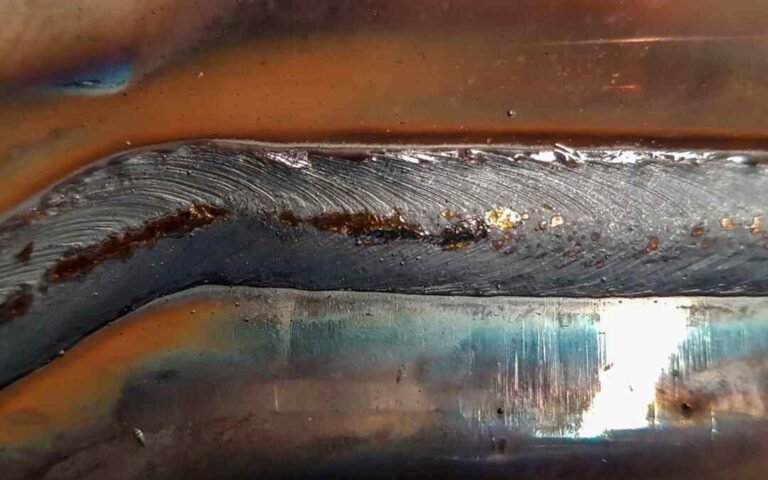
Stick Welding Stainless Steel: Troubleshooting Common Problems
Issues with Arc Stability
Arc stability is crucial for producing a consistent and high-quality weld. Unstable arcs can lead to defects and poor weld quality.
Causes:
- Incorrect arc length
- Inconsistent current
- Poor electrode quality
Solutions:
- Maintain Consistent Arc Length: Keep the arc length equal to the diameter of the electrode to ensure stability.
- Check Equipment: Ensure your welding machine functions correctly and provides a consistent current.
- Use Quality Electrodes: Make sure the electrodes are dry and in good condition. Store them properly to prevent moisture absorption.
Electrode Problems and Solutions
Electrode issues can cause welding problems, such as poor arc starts, excessive spatter, and weak welds.
Common Problems:
- Poor Arc Starts: Difficulty in striking and maintaining the arc.
- Excessive Spatter: Too much molten metal spraying from the weld.
- Weak Welds: Welds that lack strength and integrity.
Solutions:
- Select the Right Electrode: Choose an electrode suitable for the material and welding conditions. For stainless steel, use E308L or E309L electrodes.
- Proper Storage: Store electrodes in a dry environment to prevent moisture absorption.
- Correct Technique: Ensure you use the correct technique to strike and maintain the arc. Practice makes perfect.
Dealing with Contamination
Contamination can cause various defects in the weld, such as porosity and lack of fusion.
Sources of Contamination:
- Dirty Workpiece: Dirt, grease, rust, or other contaminants on the surface.
- Moist Electrodes: Electrodes that have absorbed moisture.
- Environmental Factors: Dust, oil, or other contaminants in the welding area.
Solutions:
- Clean the Workpiece: Thoroughly clean the surface before welding. Use a wire brush, grinder, or chemical cleaner as needed.
- Dry Electrodes: Store electrodes properly and ensure they are dry before use.
- Control the Environment: Minimize contaminants in the welding area by keeping it clean and well-ventilated.
Managing Heat Input and Weld Pool
Managing heat input is essential to avoid defects such as warping, burn-through, and excessive distortion.
Common Issues:
- Warping and Distortion: Excessive heat causes the metal to warp.
- Burn-Through: Too much heat melts through the workpiece.
- Inconsistent Weld Pool: Difficulty in controlling the molten metal.
Solutions:
- Adjust Welding Parameters: Set the welding current and voltage according to the material and electrode specifications.
- Control Travel Speed: Move the electrode consistently to maintain a stable weld pool.
- Use Heat Sinks: For thin materials, use heat sinks to absorb excess heat and prevent burn-through.
- Practice Techniques: Practice techniques such as weaving and backstepping to effectively control the heat input and manage the weld pool.
Advanced Stick Welding Stainless Steel Techniques
Welding Thin Stainless Steel
Welding thin stainless steel requires precision and control to avoid burn-through and warping.
Tips:
- Use a Low Amperage: Lower the welding current to prevent excessive heat that can cause burn-through.
- Short Arc Length: Maintain a short arc length to concentrate the heat and reduce the risk of burning through the metal.
- Fast Travel Speed: Move the electrode quickly along the joint to minimize heat buildup.
- Backing Bar: Use a copper backing bar to help dissipate heat and support the weld pool.
Multi-Pass Welding for Thick Sections
Multi-pass welding ensures proper penetration and strength for welding thick sections of stainless steel.
Steps:
- Root Pass: Begin with a root pass to achieve full penetration. Use a smaller diameter electrode for better control.
- Fill Passes: Add multiple fill passes to build up the weld. Clean each pass thoroughly before adding the next one to avoid slag inclusion.
- Cap Pass: Finish with a cap pass to create a smooth, even surface. Use a slightly wider weaving pattern for good coverage.
Tips:
- Preheat: Preheat the material to reduce the risk of cracking and improve weld penetration.
- Interpass Cleaning: Clean each layer of weld metal before proceeding to the next pass to ensure good adhesion and prevent defects.
Welding Dissimilar Metals
Welding dissimilar metals, such as stainless steel to carbon steel, requires special considerations to ensure a robust and defect-free weld.
Tips:
- Select the Right Electrode: Use an electrode compatible with both metals, such as E309L, designed for joining stainless steel to carbon steel.
- Preheat and Post-Weld Heat Treatment: Preheat the carbon steel side to reduce thermal stress and prevent cracking. After welding, use post-weld heat treatment to relieve residual stresses.
- Control Heat Input: Balance the heat input to avoid excessive melting of either metal. This helps prevent dilution and maintains the integrity of both materials.
- Use Buffer Layers: For highly dissimilar metals, consider using a buffer layer of a compatible metal to transition between the two different metals.
Conclusion
Mastering stick welding stainless steel involves understanding the fundamental techniques and being prepared to tackle common challenges. Each step requires practice, precision, and attention to detail, from the basics of striking the arc and maintaining proper weld pool control to advanced methods for welding thin materials and dissimilar metals.
Do you need a reliable sheet metal parts manufacturer? Shengen is the place to go. We specialize in sheet metal laser cutting, bending, surface finish, and CNC Machining. Reach out to Shengen Today and seek help from professionals!
FAQs
What is the best electrode for welding stainless steel?
The best electrodes for welding stainless steel are typically E308L or E309L. E308L is commonly used for welding 304 stainless steel and similar alloys, while E309L is used when welding dissimilar metals such as stainless steel to carbon steel. These electrodes provide good corrosion resistance and strong welds.
How do you prevent warping when welding stainless steel?
To prevent warping when welding stainless steel, follow these tips:
- Use Tack Welds: Regularly Apply tack welds to hold the pieces in place and minimize movement during welding.
- Control Heat Input: Adjust the welding current and travel speed to avoid excessive heat buildup.
- Use Heat Sinks: Place heat sinks, such as copper bars, near the weld area to absorb and dissipate excess heat.
- Alternate Welding Sides: Weld small sections on alternating sides of the joint to distribute heat evenly and reduce thermal stress.
- Allow Gradual Cooling: Let the welded piece cool gradually to minimize the risk of distortion caused by rapid cooling.
How do you know if your weld is strong enough?
To determine if your weld is strong enough, inspect and test the weld:
- Visual Inspection: Look for common defects such as cracks, porosity, undercutting, and inconsistent bead appearance. A good weld should be smooth and uniform.
- Non-Destructive Testing (NDT): Use methods such as dye penetrant testing, ultrasonic testing, or X-ray inspection to identify internal defects without damaging the weld.
- Destructive Testing: For critical applications, perform destructive tests such as bend tests, tensile tests, or impact tests to evaluate the weld’s mechanical properties.
Can you weld stainless steel with a regular arc welder?
Yes, you can weld stainless steel with a regular arc welder, also known as a stick welder. Ensure you use the appropriate stainless steel electrodes, such as E308L or E309L, and set your welder to the correct amperage for the thickness of the material you are welding.
More Resources:
Choosing the Right Welding Electrode – Source: Royal
Managing Weld Pool and Heat Input – Source: AMI
Stress Relieving in Welding – Source: Hobart
Hey, I'm Kevin Lee

For the past 10 years, I’ve been immersed in various forms of sheet metal fabrication, sharing cool insights here from my experiences across diverse workshops.
Get in touch

Kevin Lee
I have over ten years of professional experience in sheet metal fabrication, specializing in laser cutting, bending, welding, and surface treatment techniques. As the Technical Director at Shengen, I am committed to solving complex manufacturing challenges and driving innovation and quality in each project.

